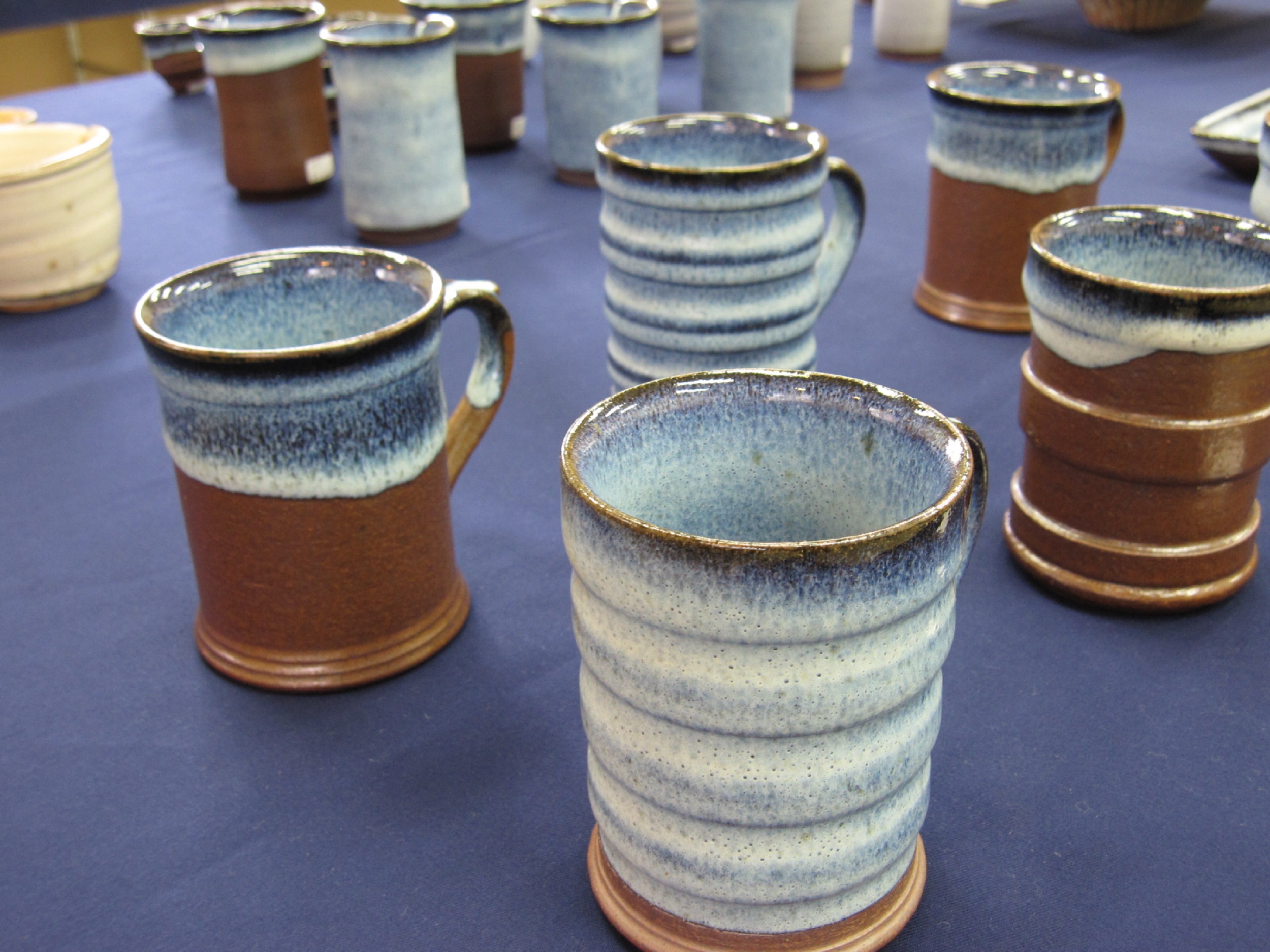Shiraiwa Ware
Shiraiwa ware is known for the striking contrast of white-blue “sea cucumber” glaze (namako-yū) over dark brown clay. The glaze’s unique color is achieved during the firing process, when iron in the clay reacts with silica in one of the glaze’s key ingredients, rice-husk ash. The glaze is extremely difficult to work with due to its narrow temperature range: if the temperature in the kiln is too high, the color becomes muddled; if it is too low, the glaze loses its luster. These parameters and the overall firing process were fine-tuned by the Watanabe family, who revived the craft in the 1970s at their studio called Waheegama.
The first Shiraiwa ware vessels were made in 1771 by the ceramicist Matsumoto Unshichi (d. 1774), who founded a kiln after discovering high-quality clay in the Shiraiwa area, to the east of Kakunodate. Shiraiwa ware was unusual for its time, as it was made for a wide range of customers and purposes, from ornate vessels presented as gifts to everyday items such as storage containers for sake. The potters typically left a marking on the inside of each piece to show who had made it, which suggests that they took personal pride in their work.
By the 1870s, however, demand for Shiraiwa ware had decreased due to the loss of patrons and an influx of other pottery from outside Akita Prefecture. In 1896, disaster struck when an earthquake destroyed most of the kilns. With almost no demand for new Shiraiwa ware, very few potters chose to rebuild their kilns. In 1900, the remaining kilns were destroyed again in a fire. This time, none were rebuilt, and production ceased entirely.
With the help of Living National Treasure and potter Hamada Shōji (1894–1978), the Watanabe family successfully revived Shiraiwa ware in the 1970s through extensive research and much trial and error. Today, the Watanabe family are the only potters who produce Shiraiwa ware with its signature opalescent blue glaze.

- Access
- Sightseeing Spots
- Choose from areas
- Hachimantai/Tamagawa
- Nyutou
- Tazawako Plateau/Mizusawa/Komagatake
- Tazawako
- Dakigaeri/Jindai/Shiraiwa
- Nishiki
- Kakunodate
- Seasonal Recomendations
- Lists by Season
- Campgrounds
- Products
- Other
